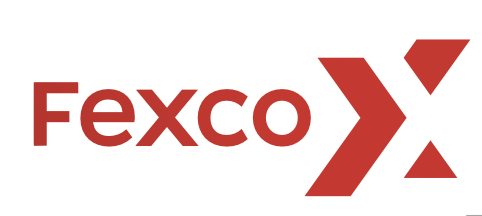Defining ‘digital’ and prioritising human experience

Martin Ryan, Managing Director of Fexco Managed and Advisory Services talks to eolas Magazine about digital, and how human experience is the key design consideration when implementing the Government’s Digital and ICT Strategy.
There is no one definition or description of the word “digital”.
In the past 50 years, the word “digital” has become synonymous with progress and innovation. The main goal of digital technology is to improve user experiences and optimise processes, making it crucial for the Irish Government to prioritise human experience in its Digital and ICT Strategy.
Ireland continues to effectively modernise its public services through a human-centric lens, apparent across a wide range of public services such as an efficient tax system, and progress in vital economic contributors like the tourism sector, which benefits from government support such as the Digital That Delivers programme and ongoing efforts by organisations like Fáilte Ireland.
As an operator of services on behalf of both the public and private sector that interacts with millions of individuals and businesses in Ireland on an annual basis, Fexco has a clear view on what makes a good user experience, and we have defined our own definition and framework of what digital is which may help when designing public services.
Focusing on digital and user experience is crucial today, as public service consumers’ demands and expectations are at an all-time high, both in addressing challenges like the housing crisis and promoting economic prosperity in areas like tourism.
Digitising the tourist experience and maintaining famous Irish human experience
Tourism, accounting for 3 per cent of Ireland’s GDP and 10.3 per cent of employment, thrives with support from organisations like Tourism Ireland and Fáilte Ireland. To sustain success and compete globally, a customer-centric focus is vital. In 2021, Fáilte Ireland’s €6 million Digital That Delivers programme aimed to digitalise attractions, as only 15 per cent had adequate online booking. Digitalisation and improved experiences will strengthen Ireland’s appeal post-Covid.
What sample measures can the tourism industry take to accelerate and fulfil this ambition keeping Fexco’s D.I.G.I.T.A.L framework in mind.
- Personalise experiences: Design personalised experiences at scale by offering tailored recommendations for tourists based on their persona, location, and past activities.
- Make it easy: Tourists expect digital interactions with attractions and experiences. Supporting the Digital That Delivers programme helps businesses enhance online booking, visitor management, and revenue.
- Make it different: Ireland’s unique history, arts, culture, climate, and welcoming people differentiate it as a tourist destination. Combining digital and physical experiences will enhance memory creation, further setting Ireland apart for tourists.
Using technology and customer experience to help address aspects of the housing challenge
The complex Irish housing crisis is not solved by digital and customer experience alone, but improved experiences can alleviate some challenges for those seeking housing support. Digital tools can provide clarity and certainty for tenants, buyers, landlords, and sellers. A large portion of the population relies on the private rental sector, regulated by the Residential Tenancies Board (RTB). In this highly regulated environment, continued investment in digital offerings to support the critical B2B and B2C operations that the RTB provides is necessary to continuously improve private rental sector conditions and available supports.
What sample measures are available to the housing industry to accelerate and fulfil this ambition keeping Fexco’s D.I.G.I.T.A.L framework in mind?
- Make it clear: Clear guidance is needed for the complex and evolving rules in the rental sector. Information sources such as the RTB Information Hub serve as a great source of information. In the near term, this can be further strengthened by increased, cost effective omnichannel capabilities, including intelligent automation, giving stakeholders more options to interact with the RTB.
- Make it easy: As housing demands rise, integrating systems and data across agencies and stakeholders through a centralised digital platform can improve access to housing-related public services, including rental assistance and affordable projects. The platform should be user-friendly, easily navigable, and regularly updated for accuracy.
- Make it efficient: Efficiency is vital for those impacted by the housing crisis, and swift access to information and guidance is crucial. Leveraging rich CRM features for managing unstructured communication like email and post can significantly improve the speed of access to information. A clear customer service strategy underpinned by present and future customer journey mapping and a “digital first” approach is required.
Public private partnerships
Fexco partners with digital transformation experts TEKenable to co-invest in Microsoft Dynamics 365 and Salesforce Cloud Solutions, improving customer experiences in the Irish and UK markets.
This partnership broadens Fexco’s offerings, including for the public sector, as digital priorities shift. Fexco’s Managed and Advisory Services, along with their partner network, offer expertise in operational delivery, CX transformation, process optimisation, customer journey mapping, data and MI services, and function-specific advisory services to help clients enhance their customer experiences.
Fexco’s D.I.G.I.T.A.L FrameworkDesign for personalised experience, at scale.
Gather and use data to determine what is possible in the future but harnessing the power of the past.
Integrate and share systems and data.
Try new things.
Automate.
|

T: 066 976 1258
E: info@fexco.com
W: www.fexco.com





